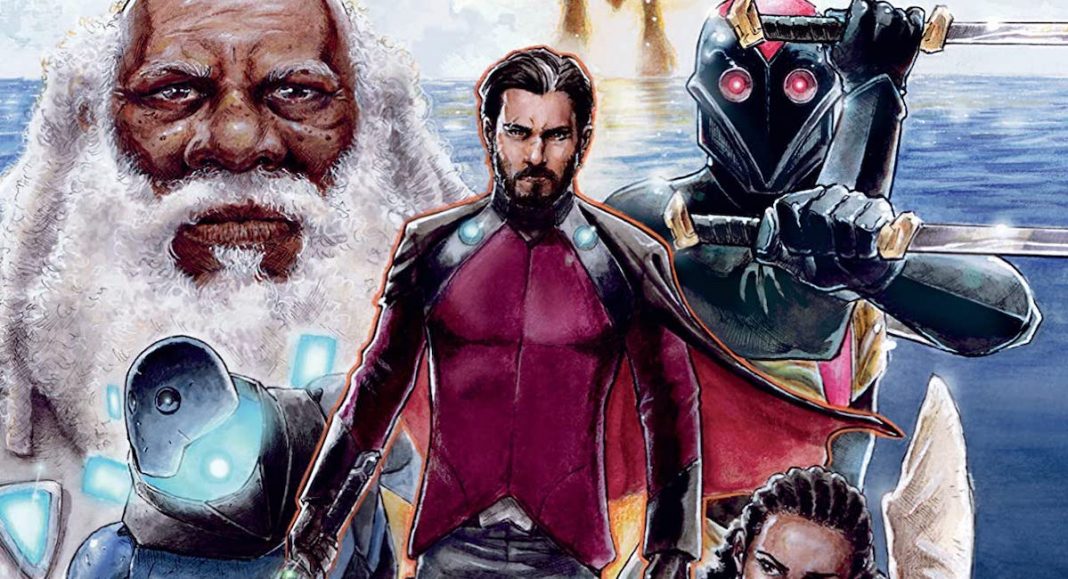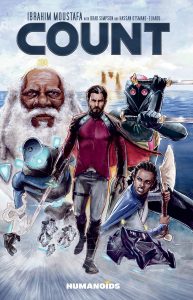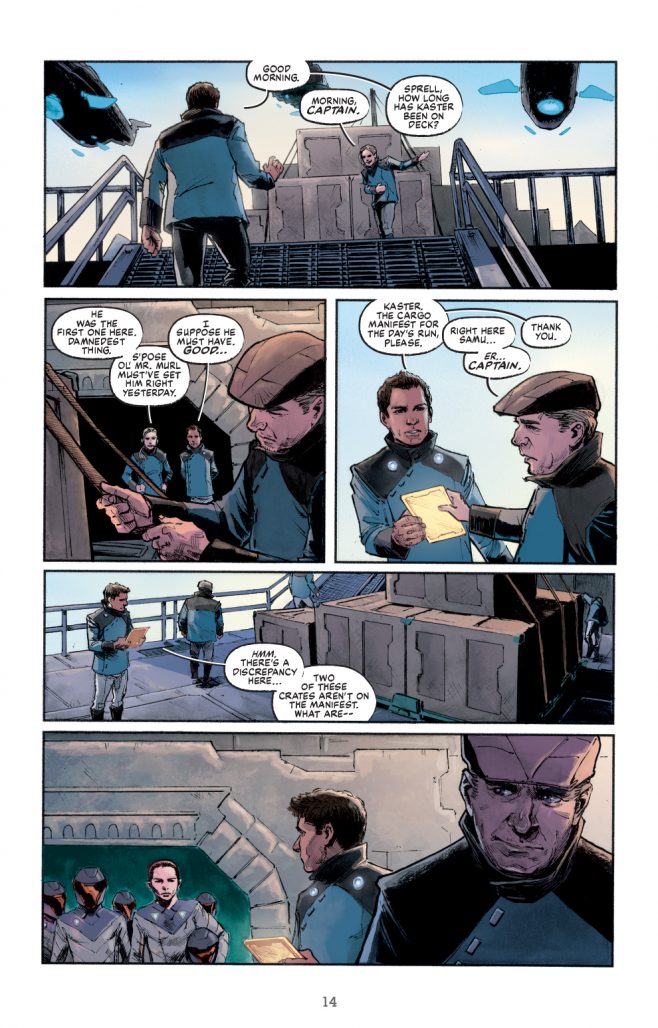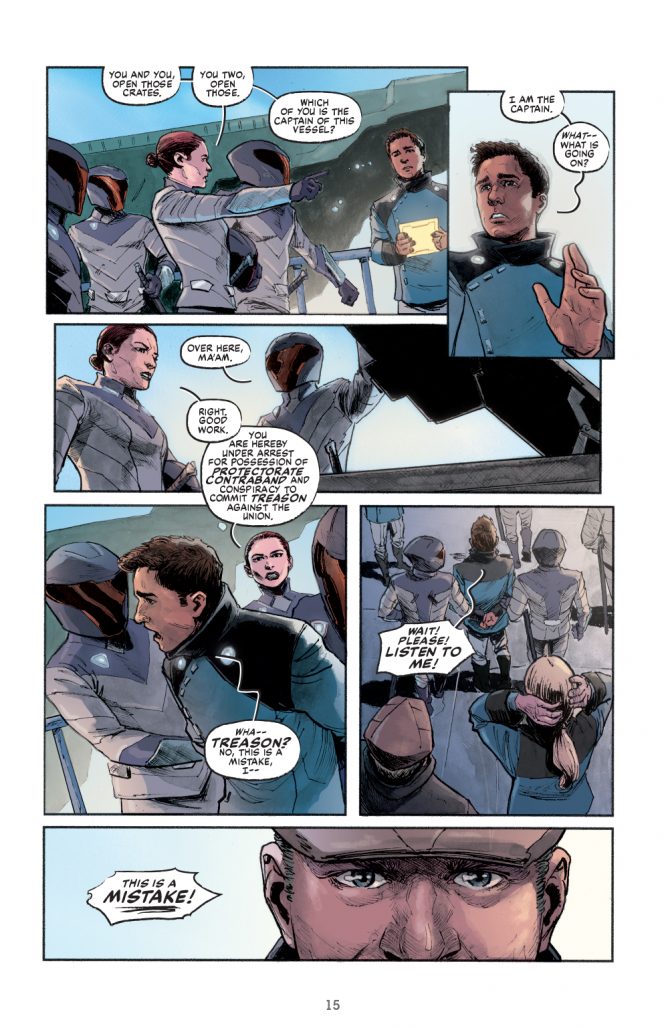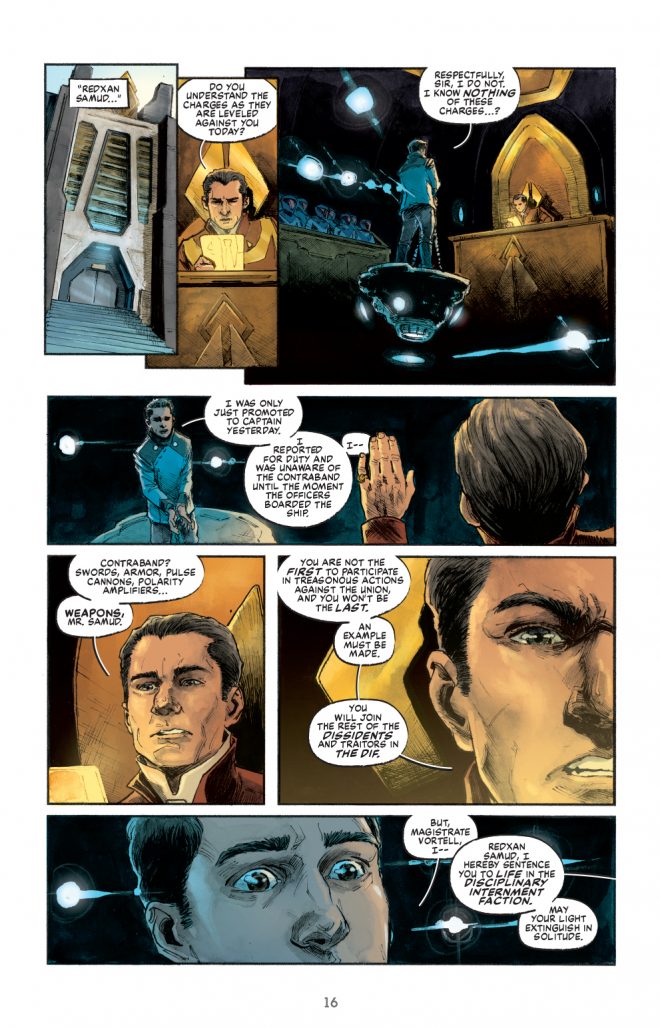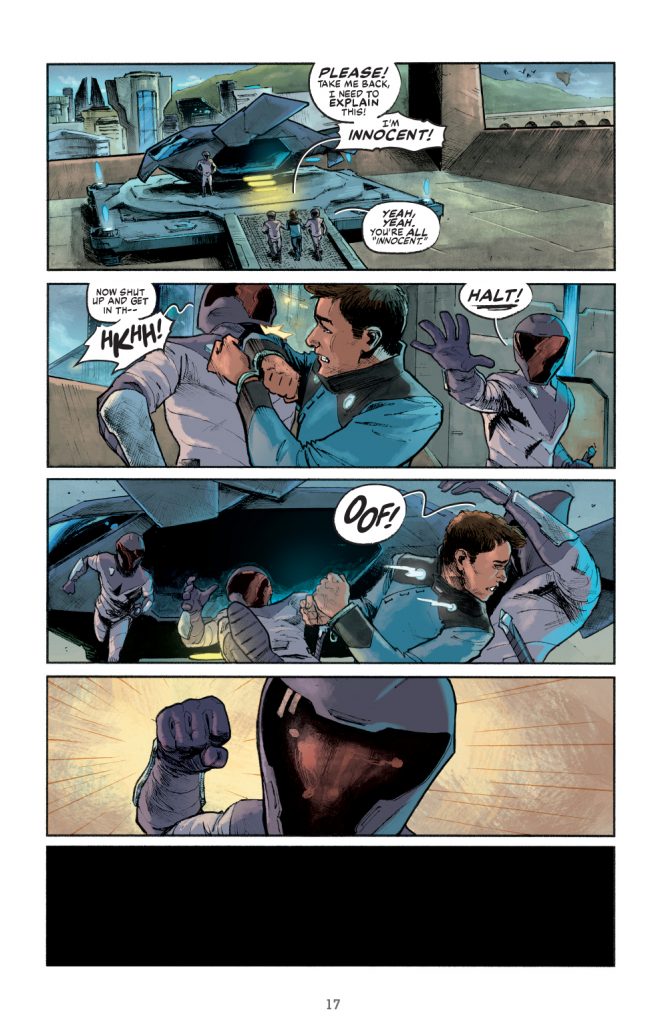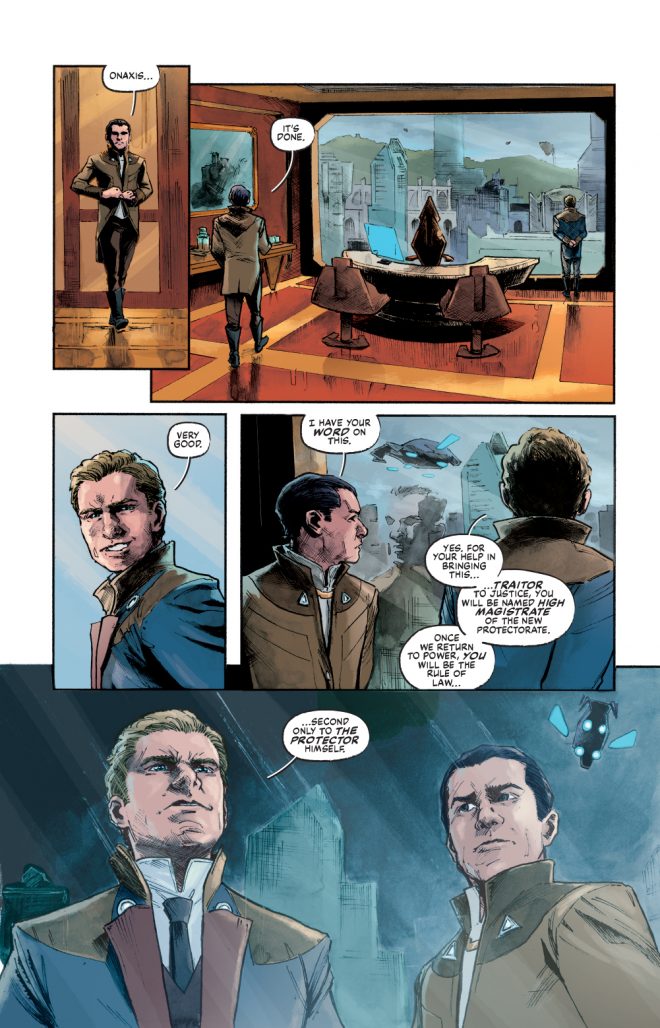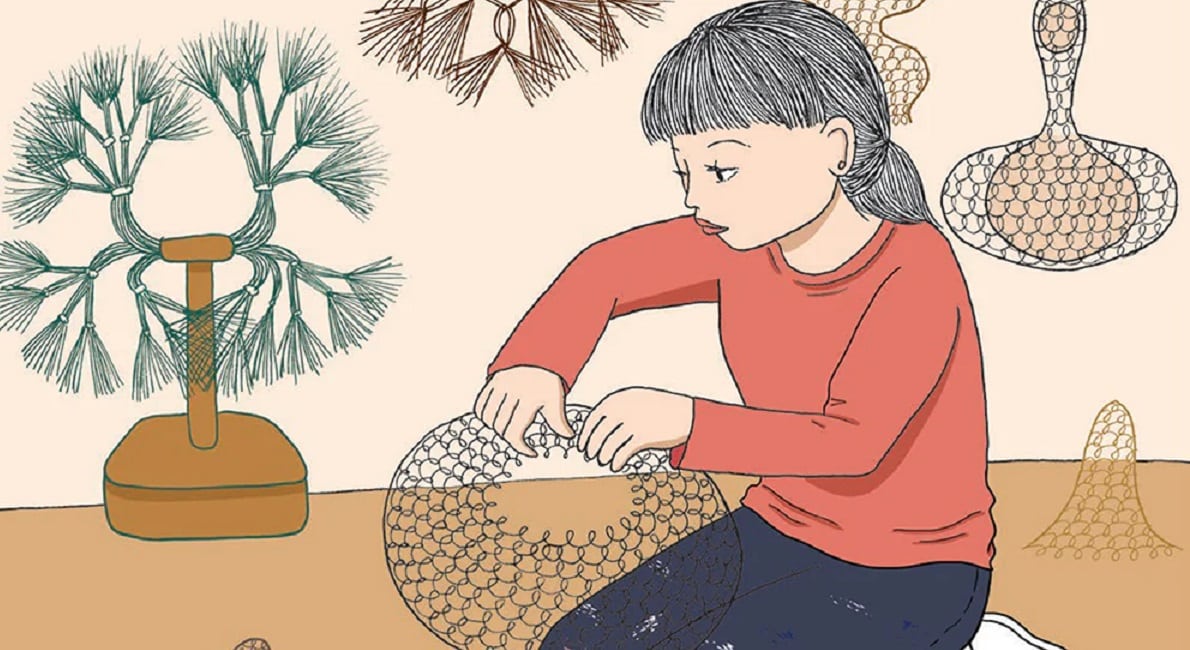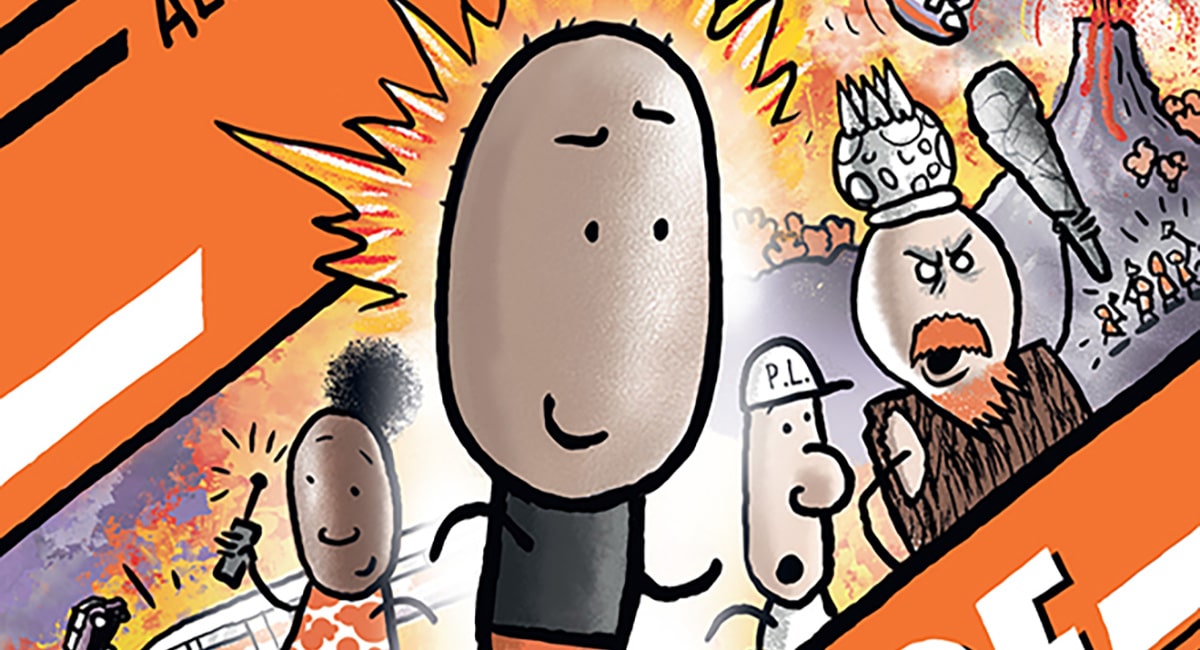Last year, Humanoids announced writer/artist Ibrahim Moustafa had signed a three-book deal with the publisher. The first book of that deal, Count, arrives in stores this week. Written and illustrated by Moustafa with colors by Brad Simpson and letters by Hassan Otsmane-Elhaou, the graphic novel is a reimagining of Alexandre Dumas‘s 1844 novel The Count of Monte Cristo. Moustafa’s book, which takes place within a futuristic sci-fi setting, follows sailor Redxan Samud as he’s framed for a crime he did not commit, sent to prison, and eventually escapes to seek his revenge upon those who betrayed him.
The Beat chatted with Moustafa about Count, his process for adapting Dumas’s classic novel, and why he’s drawn to stories about people seeking revenge.
Joe Grunenwald: When did you first read Dumas’s original Count of Monte Cristo? How long have you wanted to create your own version of this story?
Ibrahim Moustafa: My first exposures to it were an episode of the children’s show Wishbone that my little sisters used to watch, and the 2002 film adaptation. When I had the idea to reinterpret it as a sort of sci-fantasy comic, I tracked down an audio version of the book to listen to while working on other comics work so that I could perform the double duty of drawing my regular projects while planning for the next one. (It was surprisingly hard to find!). All in all, from the idea to adapt it like this, to the time I pitched it to Humanoids, it was probably about 2 years or so.
Grunenwald: What was your process like for adapting the novel? How concerned were you about hewing closely to the events of the book, and how much freedom did you allow yourself to put your own spin on things?
Moustafa: I allowed myself a ton of freedom. Count isn’t an adaptation in the sense that I set out to adhere closely to the source material; I actually veer pretty far off the track fairly early on. Maybe “inspired by The Count of Monte Cristo” would have been the better tag line for this project, in retrospect. [laughs]
The broad strokes are there throughout: a young man is wrongfully imprisoned, befriends another prisoner, and escapes with a secret fortune, sights set on revenge. But in a broader sense, Count is a story of fighting for freedom, both in the literal sense and from one’s demons, and revolution.
I also took liberties with regards to making the story action-infused. The original is a very long character drama, with nary a sword drawn. I thought this was a story just begging for sword fights, vehicle chases, and big battles.
Grunenwald: What went into your decision to retell this story in a sci-fi setting?
Moustafa: I felt that setting it in a world of my choosing was going to be way more interesting to me, and readers. 19th century France was a fascinating time, but we’ve seen it before many times. The elements of this story are fairly timeless, and I wanted the setting to match that.
Grunenwald: Count is the latest book you’ve worked on that’s explicitly a revenge story. I’m thinking also of your comic Jaeger. What keeps drawing you back to that theme?
Moustafa: I have always loved stories of justice and comeuppance, and we’ve been living in a time where many of us are starting to become aware of the injustices happening plainly in front of us every day. Telling stories in the revenge genre is cathartic for me. If the bad people in real life are getting away with it, the one’s in my work certainly are not, and it makes me feel a little better. [laughs]
Grunenwald: You’ve worked on projects like this that you wrote and drew yourself, and other projects that you only did the art for. Do you have a preference between the two? What do you think are the benefits to you as an artist of either method?
Moustafa: I really love the collaborative aspects of working with a great writer, but it’s always extremely difficult to guess at what another person was thinking when they wrote a script. It’s difficult for a lot of writers to think with the visual foresight that is necessary to mitigate a lot of the logistics issues that pop up when an artist is translating their words into pictures, and that is often the hardest part of drawing comics, for me.
So, writing for myself is more fun from a creative standpoint and it allows me to put my best foot forward, visually. It’s also easier, because I’ve been with the idea from the start, so often times the script is just a formality so that editorial knows what I’m doing, and the other members of the team have a reference point. Creatively, the only hiccup is my ability or inability to draw what’s in my head in a way that feels like it was successful.
Grunenwald: There are some pretty large time jumps in Count – in particular, the years that Samud spends in prison, and the period after he escapes but before he returns home. Would you ever consider returning to these characters to tell stories set during those periods?
Moustafa: I don’t think I would — I’d have liked to spend a bit more time in those periods if I’d had the room, but they don’t feel necessary to flesh out to the degree that they would merit their own projects. I do have some ideas about a story or two that might take place within that world after the events of Count, so I’m sure I’ll have those kicking around in my head for a bit.
Grunenwald: What’s next for you? This is the first of your three-book deal with Humanoids – have you begun work on your next book for them already? If so can you tease at all what it’ll be about?
Moustafa: As of this writing, I am actually just over halfway through my second book. Too early to go into details, I’m afraid, but I can tell you that it takes two familiar genres and weaves them together in a fun way. I’m excited to finish it and get it out into the world.
Published by Humanoids, Ibrahim Moustafa’s Count arrives in bookstores and digitally on Tuesday, March 16th, and in comic shops on Wednesday, March 17th.


